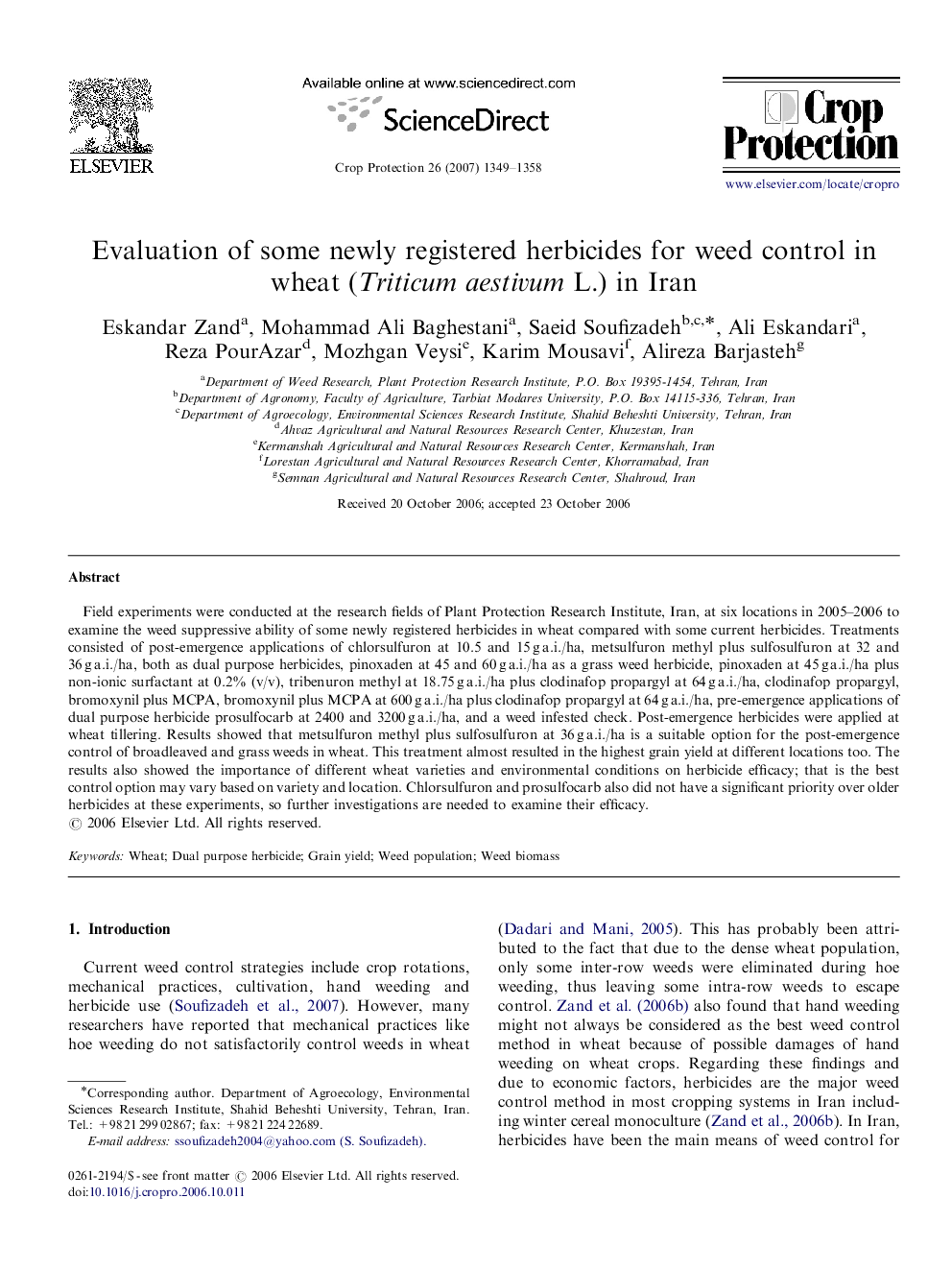| Article ID | Journal | Published Year | Pages | File Type |
|---|---|---|---|---|
| 4507880 | Crop Protection | 2007 | 10 Pages |
Field experiments were conducted at the research fields of Plant Protection Research Institute, Iran, at six locations in 2005–2006 to examine the weed suppressive ability of some newly registered herbicides in wheat compared with some current herbicides. Treatments consisted of post-emergence applications of chlorsulfuron at 10.5 and 15 g a.i./ha, metsulfuron methyl plus sulfosulfuron at 32 and 36 g a.i./ha, both as dual purpose herbicides, pinoxaden at 45 and 60 g a.i./ha as a grass weed herbicide, pinoxaden at 45 g a.i./ha plus non-ionic surfactant at 0.2% (v/v), tribenuron methyl at 18.75 g a.i./ha plus clodinafop propargyl at 64 g a.i./ha, clodinafop propargyl, bromoxynil plus MCPA, bromoxynil plus MCPA at 600 g a.i./ha plus clodinafop propargyl at 64 g a.i./ha, pre-emergence applications of dual purpose herbicide prosulfocarb at 2400 and 3200 g a.i./ha, and a weed infested check. Post-emergence herbicides were applied at wheat tillering. Results showed that metsulfuron methyl plus sulfosulfuron at 36 g a.i./ha is a suitable option for the post-emergence control of broadleaved and grass weeds in wheat. This treatment almost resulted in the highest grain yield at different locations too. The results also showed the importance of different wheat varieties and environmental conditions on herbicide efficacy; that is the best control option may vary based on variety and location. Chlorsulfuron and prosulfocarb also did not have a significant priority over older herbicides at these experiments, so further investigations are needed to examine their efficacy.
